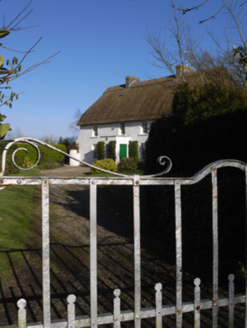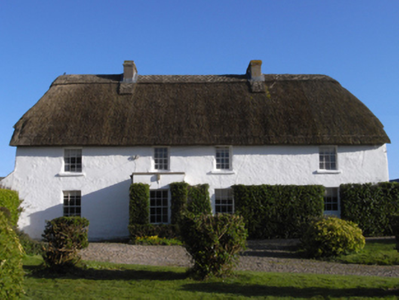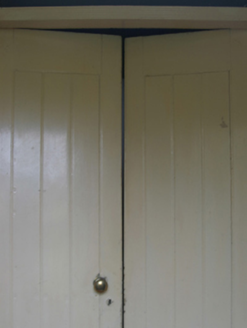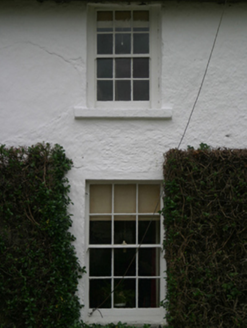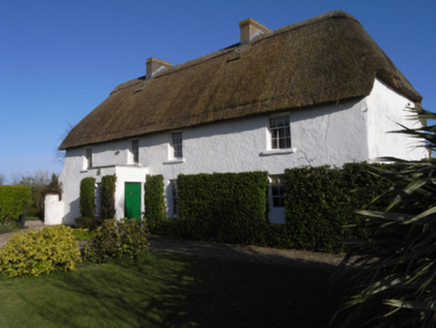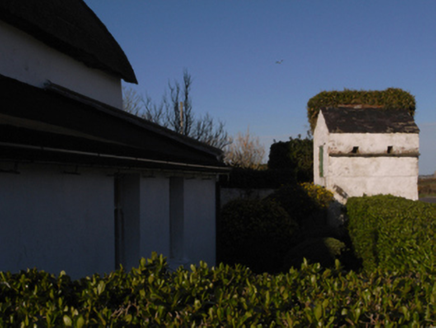Survey Data
Reg No
15705307
Rating
Regional
Categories of Special Interest
Architectural, Artistic, Historical, Social
Original Use
Farm house
In Use As
Farm house
Date
1700 - 1840
Coordinates
308876, 107005
Date Recorded
25/10/2007
Date Updated
--/--/--
Description
Detached four-bay single-storey thatched farmhouse with half-dormer attic, extant 1840, on a rectangular plan off-centred on single-bay single-storey flat-roofed projecting porch to ground floor. Sold, 1886. "Improved", pre-1903, producing present composition. Occupied, 1911. Reroofed, 2001. Chicken wire-covered replacement hipped oat thatch roof with exposed hazel lattice stretchers to raised ridge having exposed scallops, rendered chimney stacks having corbelled stepped capping supporting yellow terracotta tapered pots, and exposed hazel stretchers to eaves having exposed scallops. Part creeper- or ivy-covered limewashed lime rendered battered walls. Square-headed off-central door opening into farmhouse with concealed dressings framing timber boarded or tongue-and-groove timber panelled double doors having overlight. Square-headed window openings with limewashed sills, and concealed dressings including timber lintels framing six-over-six (ground floor) or three-over-six (half-dormer attic) timber sash windows having part exposed sash boxes centred on six-over-six timber sash windows (half-dormer attic). Set in landscaped grounds with limewashed cylindrical piers to perimeter having shallow domed capping supporting wrought iron-detailed flat iron "farm gate".
Appraisal
A farmhouse identified as an important component of the vernacular heritage of south County Wexford by such attributes as the compact rectilinear plan form off-centred on an expressed, albeit later porch; the construction in unrefined local materials displaying a pronounced battered silhouette with a patched surface finish revealing evidence of "daub" or mud; the disproportionate bias of solid to void in the massing compounded by the diminishing in scale of the openings on each floor producing a graduated visual impression; and the high pitched roof showing an oat thatch finish replenished with the financial assistance of a grant (2001) from The Heritage Council. Having been well maintained, the elementary form and massing survive intact together with substantial quantities of the original fabric, both to the exterior and to the interior allegedly repurposing timber work salvaged from ships wrecked off the nearby coast (Rowe and Scallan 2004, 1036). Furthermore, a tower-like "columbarium" (extant 1840); adjacent limewashed outbuildings (extant 1840); and a "cow tail" waterpump (extant 1903), all continue to contribute positively to the group and setting values of a neat self-contained ensemble having long-standing connections with the Keating family (NA 1901; NA 1911).
